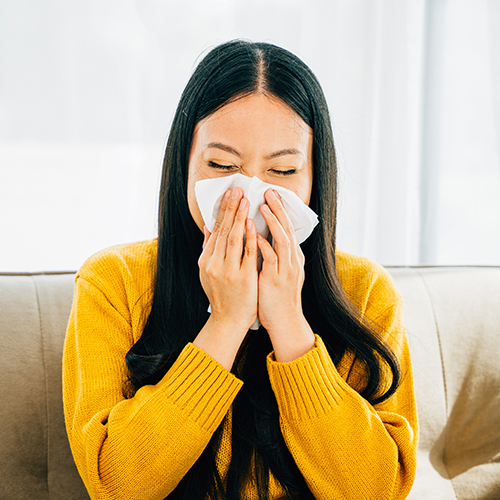September 2021
If you think the end of spring is the end of your allergy problems, think again. Late summer through late fall can be a miserable time for many. Disregard these common myths about fall allergies so you can stay symptom-free.
Myth #1. Allergies end with spring.
Fact: Seasonal allergies can continue throughout the summer and fall. Fall has its own set of allergy triggers, the most common of which is ragweed pollen. But another reason why your allergies can linger into the fall is climate change. According to a new report by the Asthma and Allergy Foundation of American (AAFA), climate change is causing warmer and longer pollen seasons.
Myth #2. Hay causes fall allergies.
Fact: Hay is not what triggers fall allergies. Hay fever is an outdated term used to describe an allergic reaction—also called allergic rhinitis—to ragweed pollen. Some 15% of Americans have an allergy to ragweed, according to AAFA. Depending on where you live, ragweed season lasts from six to 10 weeks, peaking in mid-September for much of the U.S. You will not be symptom-free until the first frost, according to the AAFA. That is when ragweed plants go dormant.
Myth #3. You are fine if you do not go into wooded areas.
Fact: Fall allergens can be anywhere. While ragweed primarily grows in rural areas—where the pollen count is often the highest—it can also be found in suburban and urban areas. It is found in every state except Alaska, but especially in the Midwest and along the East Coast.
You can also find fall allergens in your own backyard. Bluegrass, common in the south, can release pollen year-round.
There are other fall plants and weeds that can cause you to sneeze and wheeze, according to the American College of Asthma, Allergy & Immunology (ACAAI). These include cocklebur, mugwort, pigweed, goosefeet, sagebrush, lamb’s quarter, Russian thistle, and English plantain.
Myth #4. It is okay to open windows.
Fact: If you suffer from seasonal allergies, try to keep your windows closed. One of the best ways to manage seasonal allergies is to keep outdoor allergens outdoors. Opening windows lets in ragweed pollen that can stick to surfaces such as rugs, carpeting, and curtains. Ragweed pollen peaks between 10 a.m. and 3 p.m., according to the AAFA. So if you want to let in a breeze, open your windows in the early morning or late evening hours.
To remove allergens from indoor air, the ACAAI recommends using an air filter. You can either use a standalone air purifier with a HEPA (high-efficiency particulate air) filter or add a certified allergy and asthma filter to a central air conditioning system.
Myth #5. Rain washes away allergens.
Fact: While rain reduces the spread of ragweed pollen, it can contribute to the growth of mold spores—another fall allergy trigger.
Outdoors, mold can grow anywhere there is moisture or standing water, such as in a pile of fallen leaves or clogged gutters. High humidity levels indoors can contribute to mold growth in your home, so keep home humidity below 60%. When gardening or raking fallen leaves, the ACAAI recommends wearing a NIOSH-rated N-95 mask. Change your clothing afterward to avoid tracking mold and pollen into your house.
Myth #6. You can stop taking allergy medication.
Fact: To control your symptoms, the ACAAI recommends you continue to take allergy medication until pollen counts have been down for two weeks in a row. A simple way to remember: take allergy medication until the first frost.
Myth #7. Moving somewhere else makes all the difference.
Fact: Moving is not a cost-effective or long-term fix. Over time, you can become allergic to the plants in your new location. You may be fine the first year, but as sensitivity to new triggers build up in your system, symptoms can start all over again.
To keep fall allergies from making you miserable, continue to use the same strategies you use for fighting spring allergies. Different seasons, same reasons.


